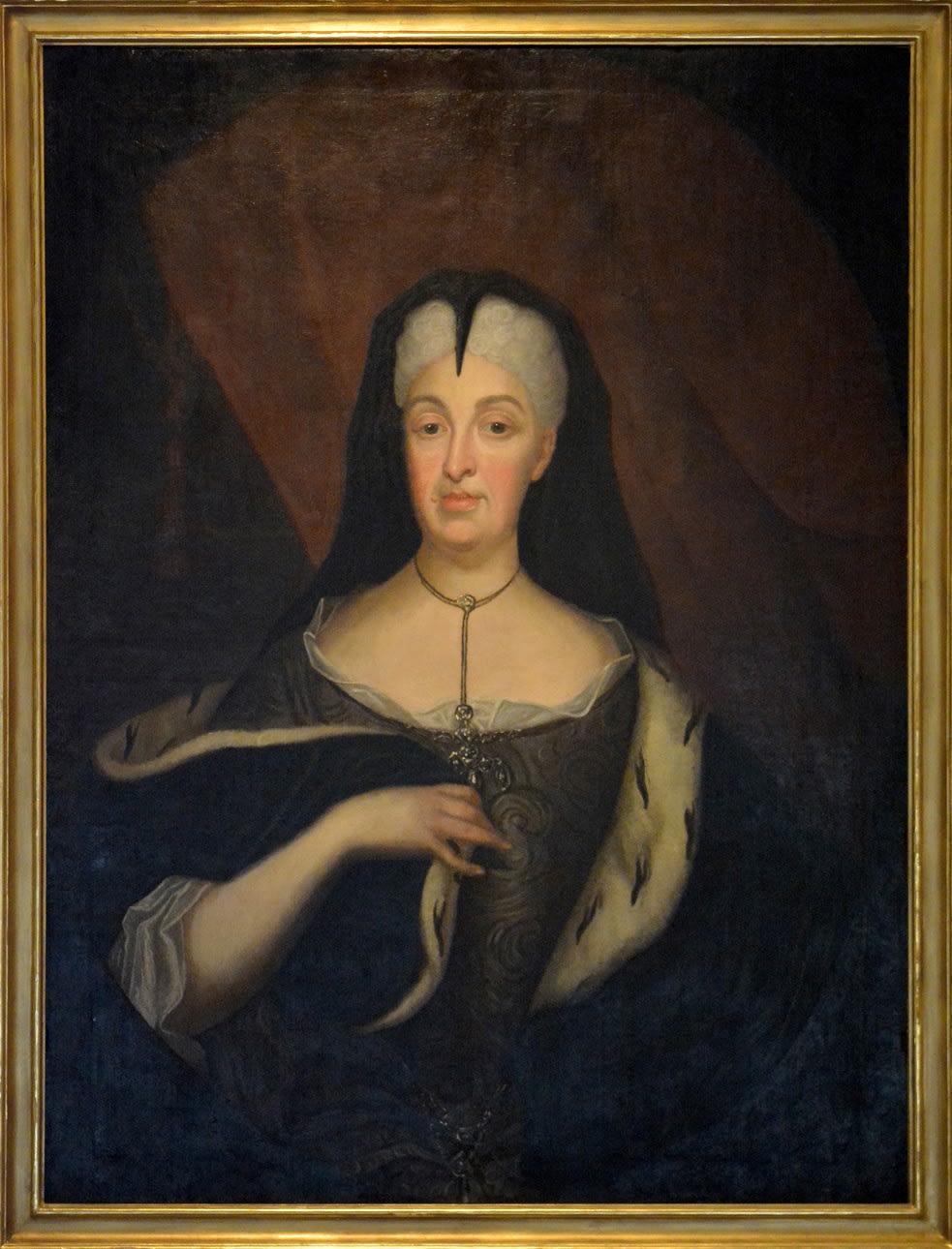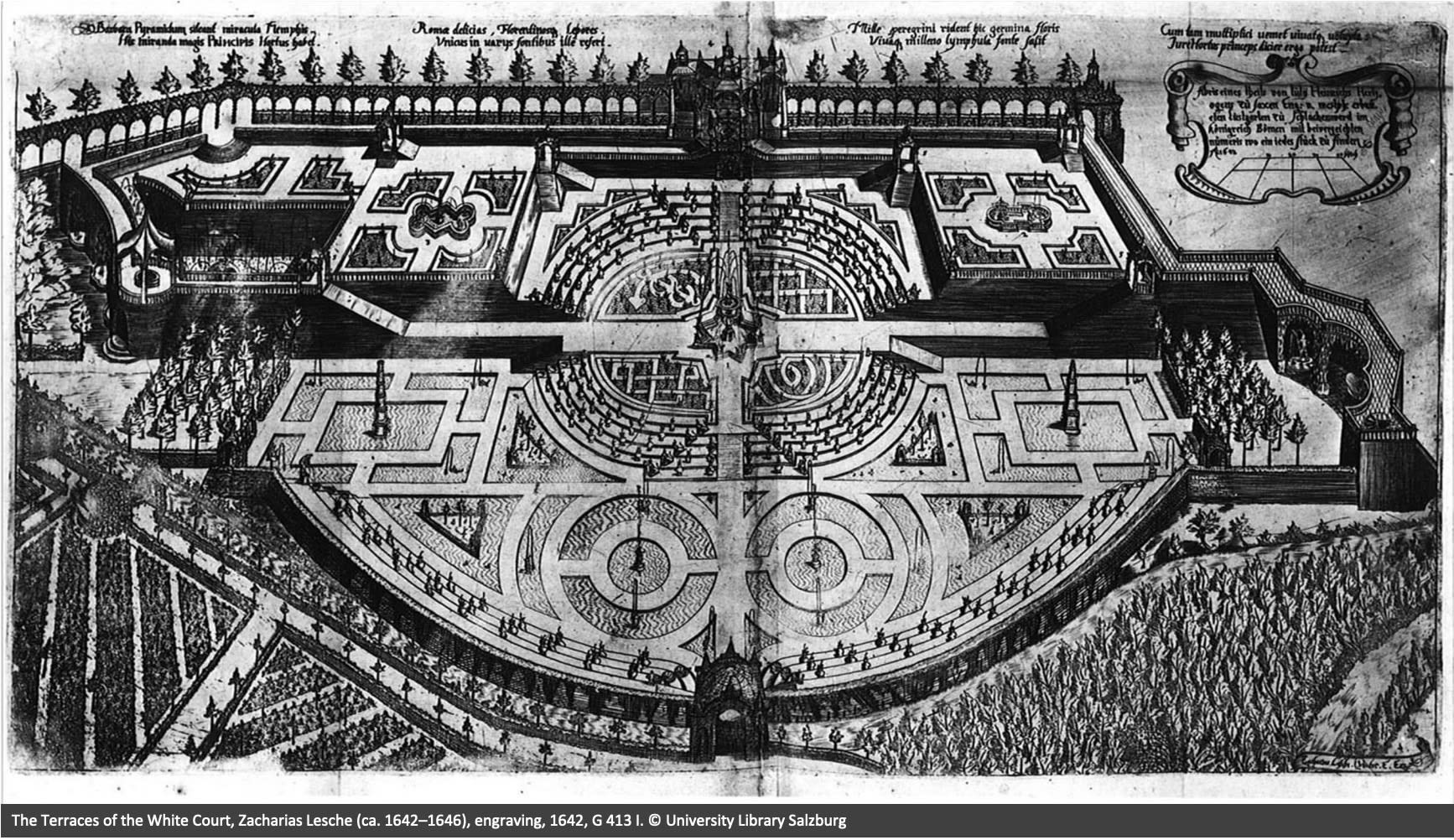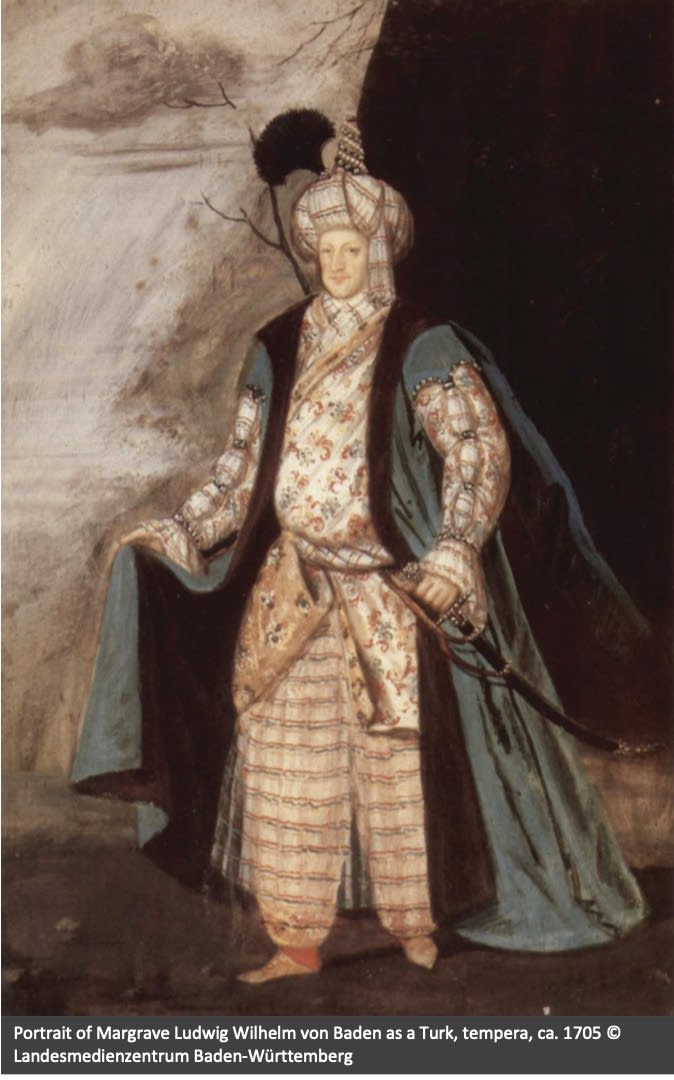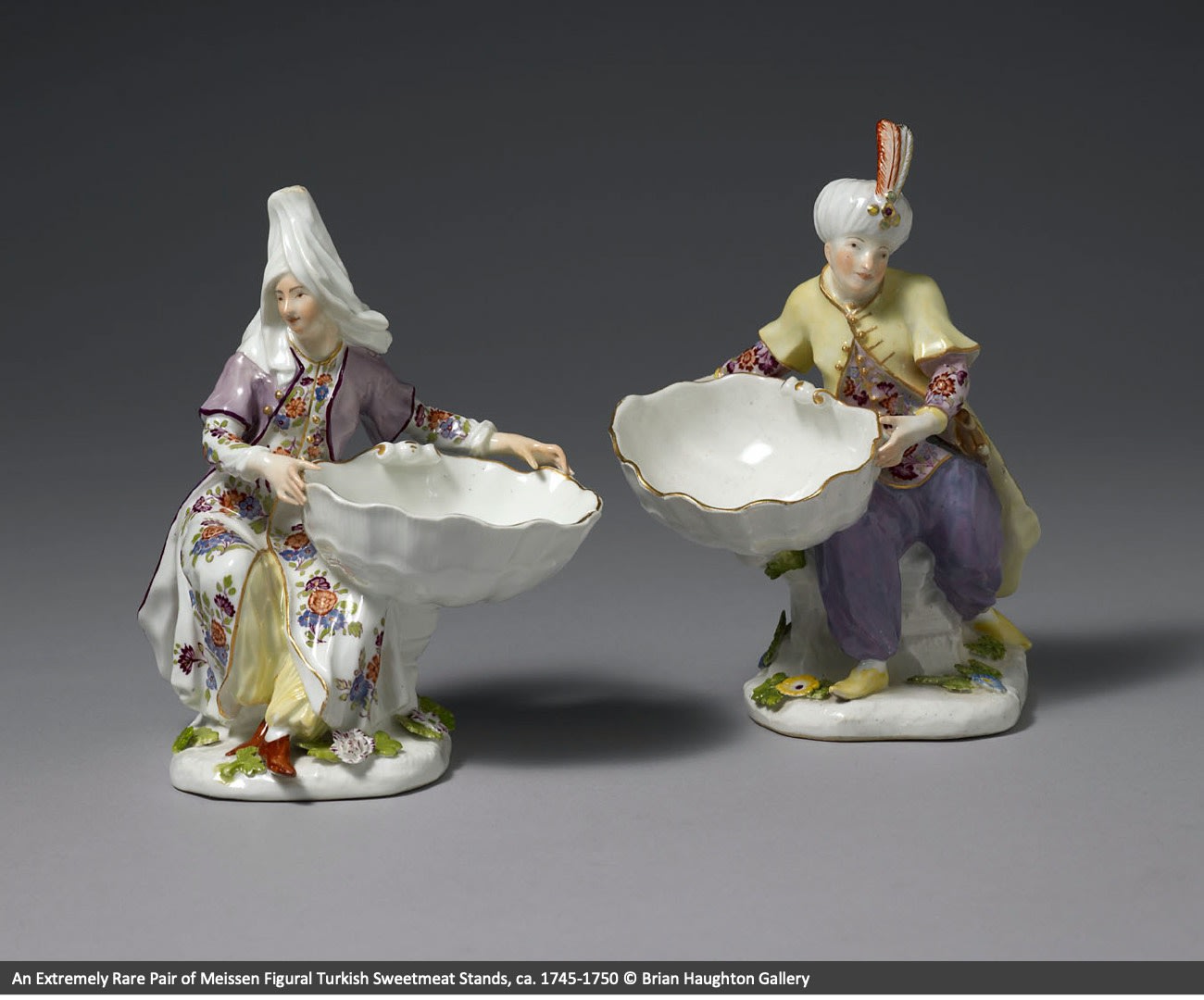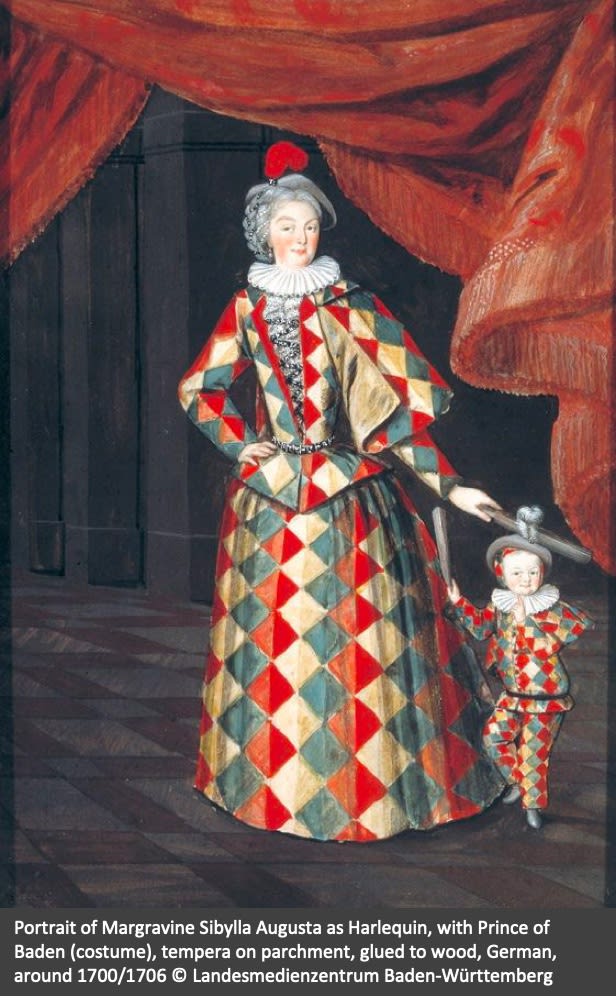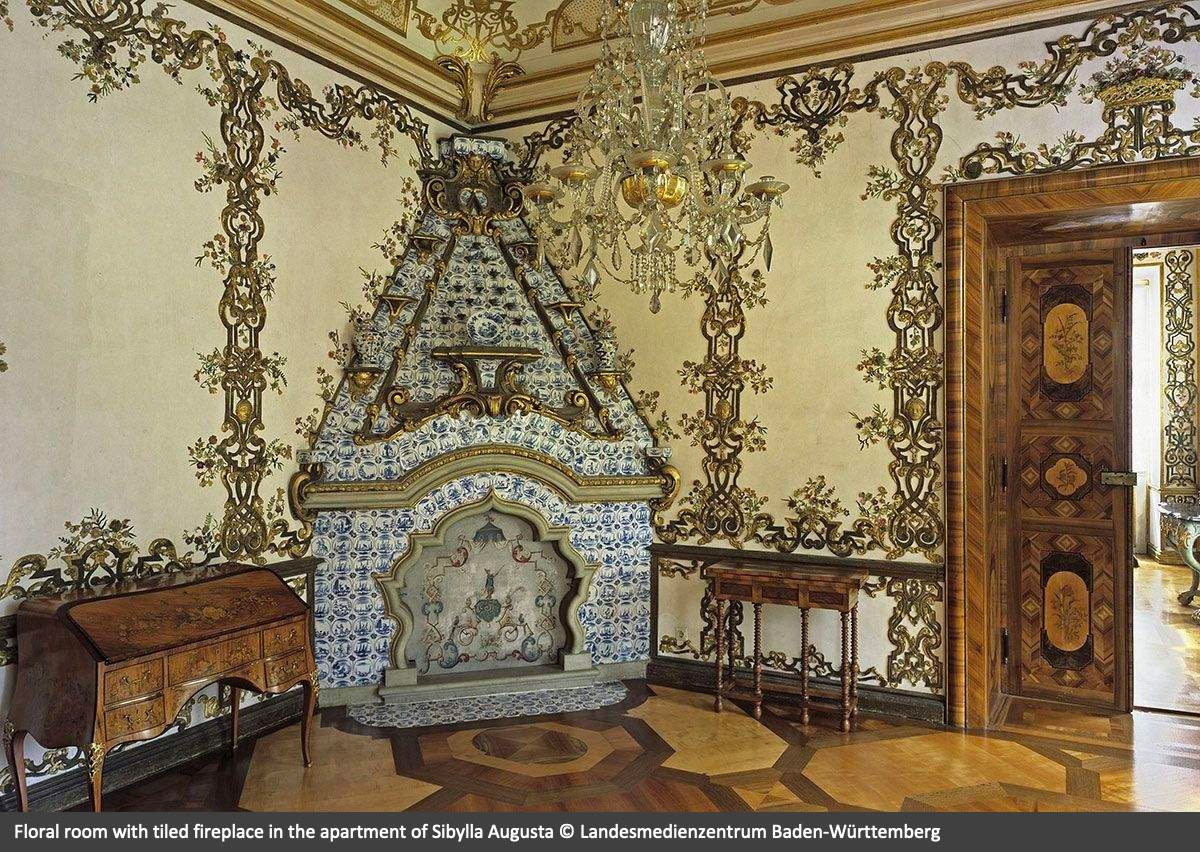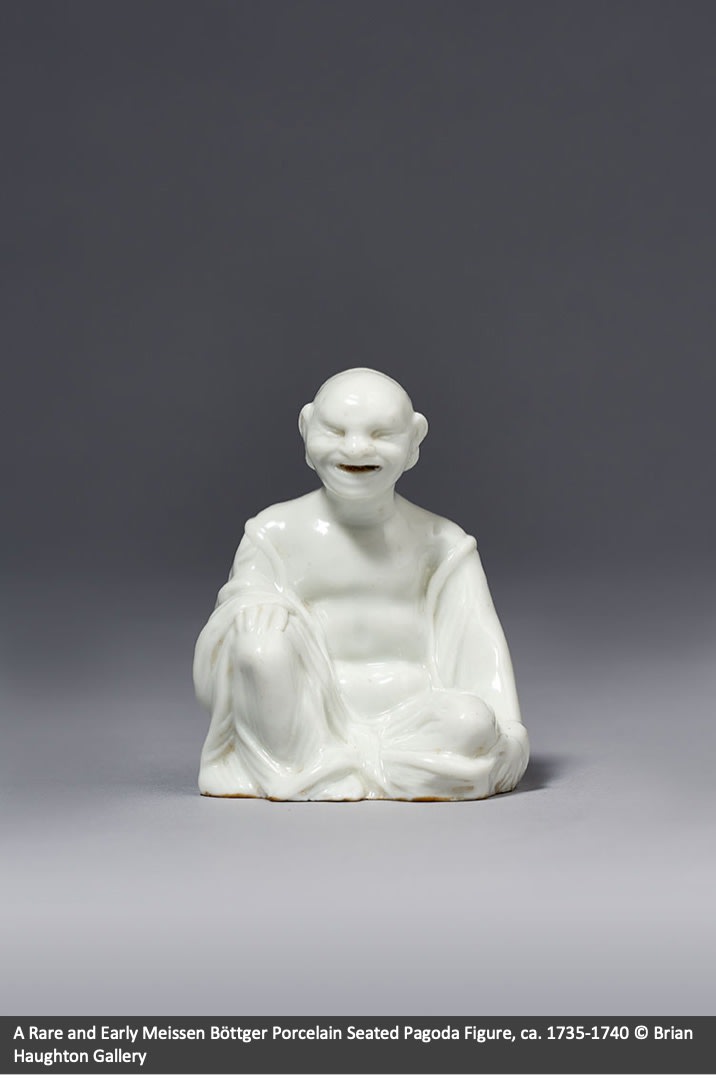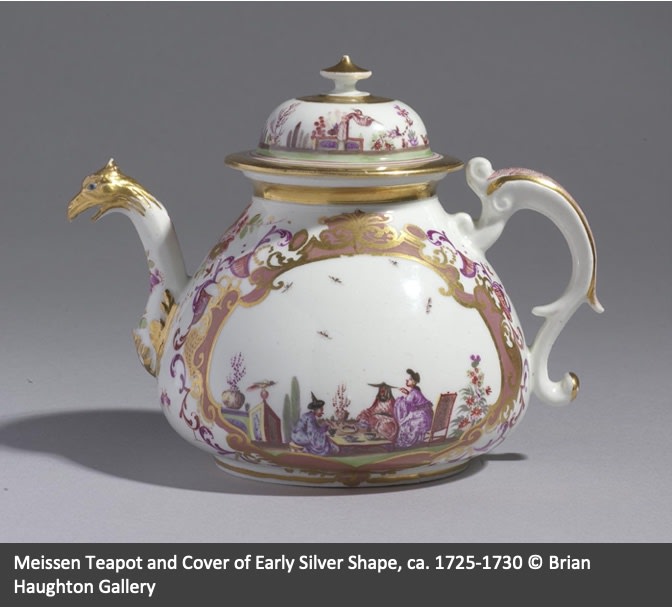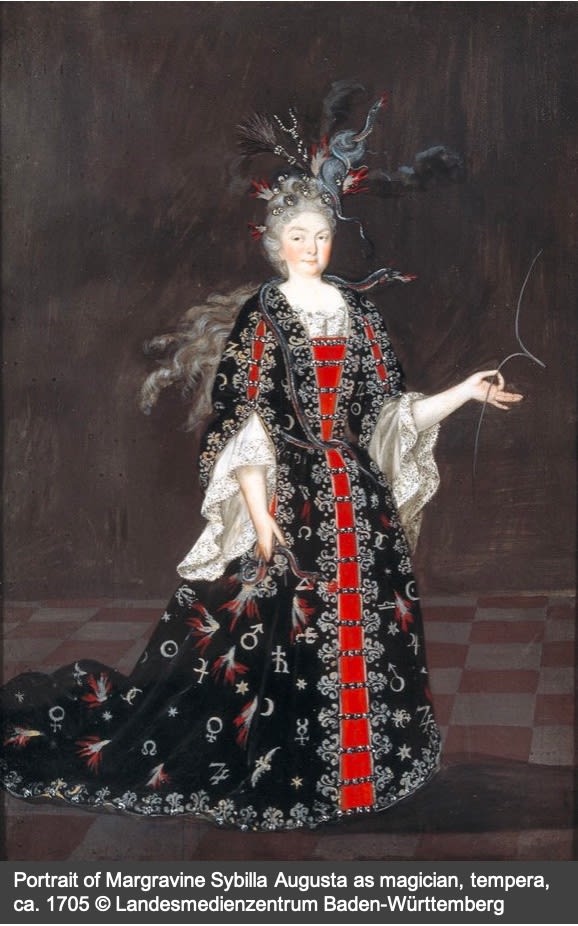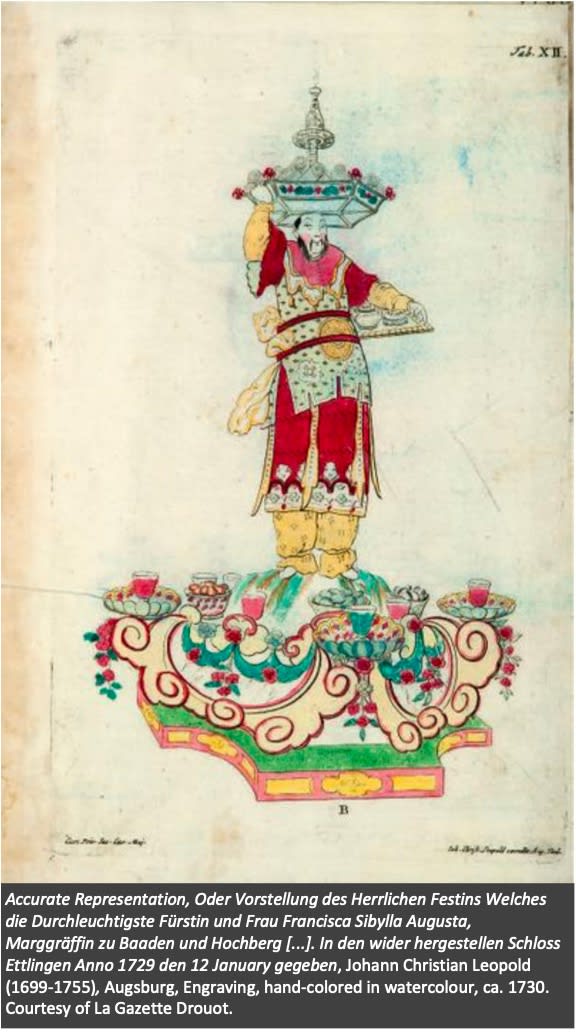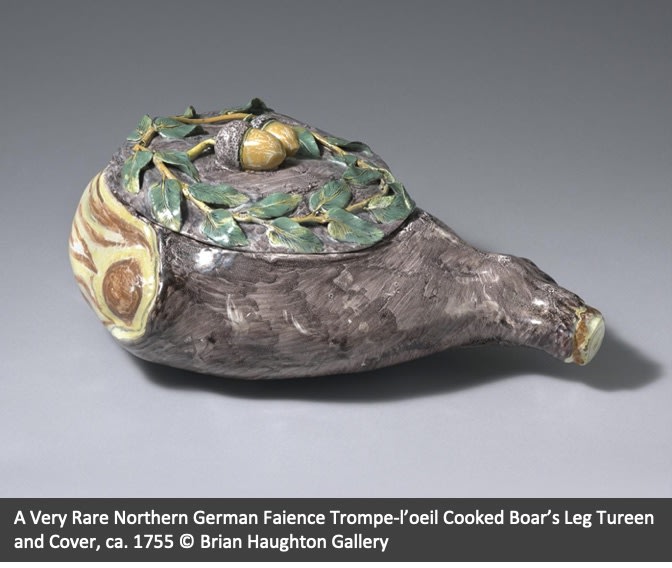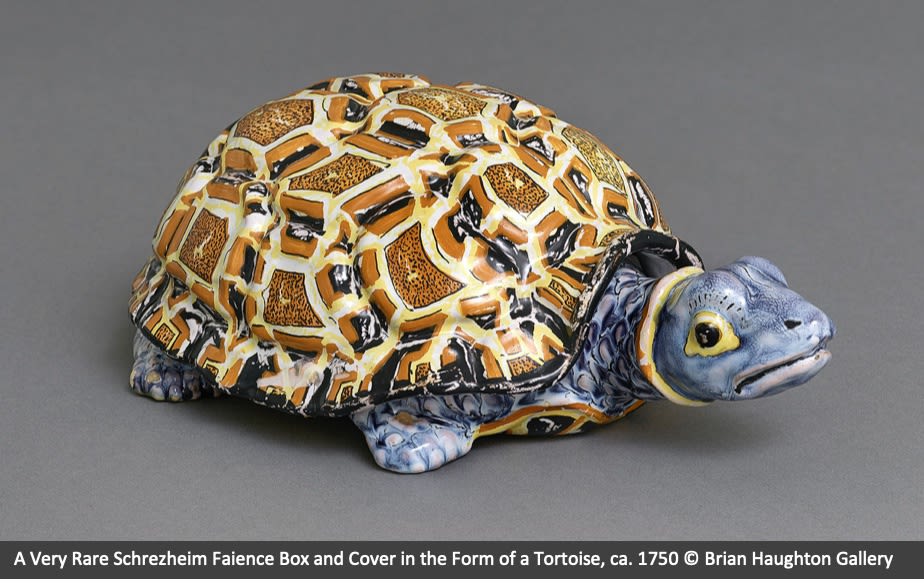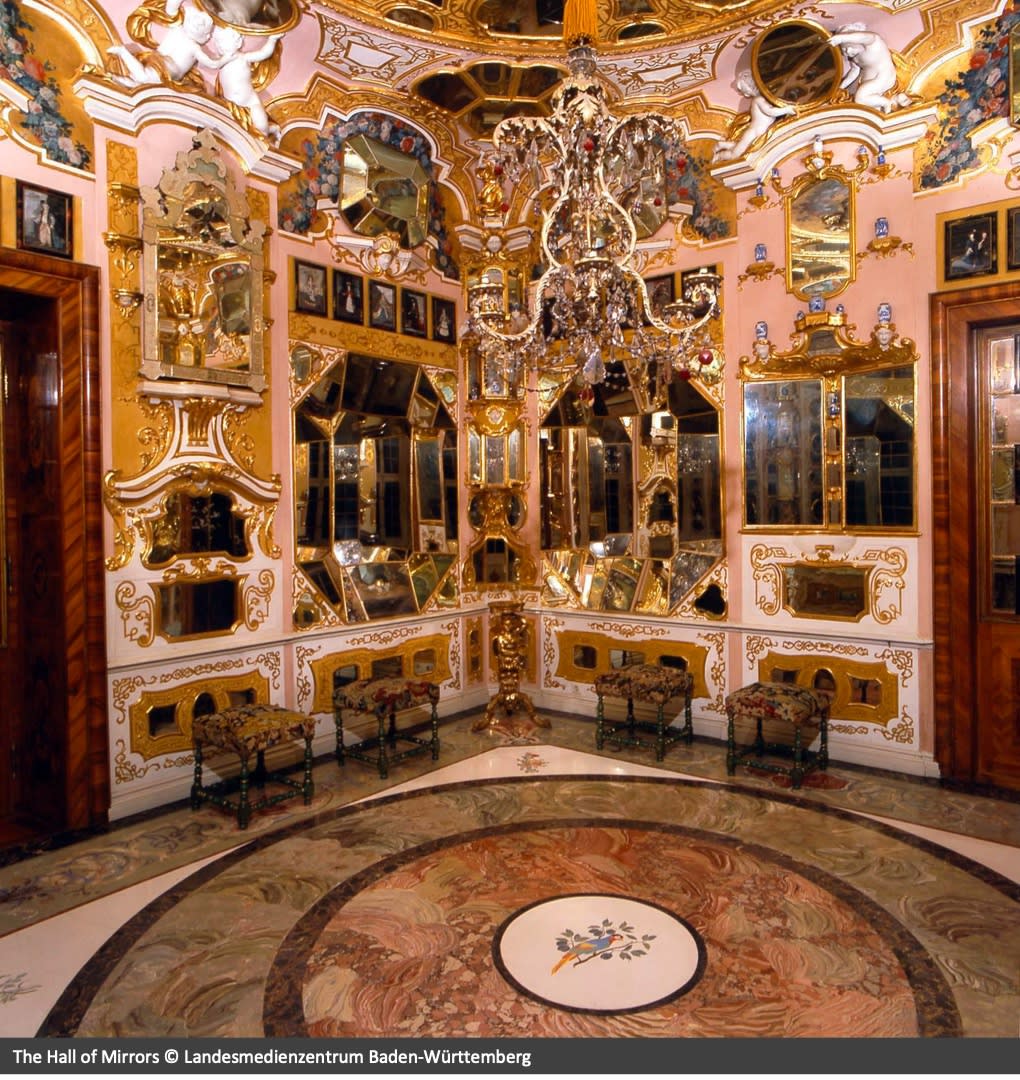Franziska Sibylla Augusta was born a duchess of Saxe-Lauenburg on the 21st January, 1675 in Schloss Ratzeburg. As the younger daughter of Duke Julius Franz of Saxe-Lauenburg and Maria Hedwig Augusta of Palatinate-Sulzbach, she and her elder sister Anna Maria Franziska (1672-1741) were raised in Schlackenwerth Castle, near Karlsbad, Bohemia.
As a result of the Thirty Years’ War, Schlackenwerth was ruled by Sibylla Augusta’s paternal grandfather Duke Julius Heinrich (1586–1665) who transformed the estate by creating the famed Baroque ‘White Court’ garden. In 1685, Julius Franz hired the Prague architect Abraham Leuthner (1639-1710) to build a new castle, attracting craftsmen and artists to his court. This artistic environment would leave a profound impression on Sibylla Augusta.
Surrounded by the exotic flowers and bubbling fountains of Schlackenwerth, the sisters received the traditional court education for girls, which meant lessons in etiquette and the arts. As they matured, their future prospects were of great concern to their parents and grandparents.
In the absence of a male heir, their father made arrangement for his daughters to inherit the duchy after him, ensuring that they also receive a rich dowry. Anna Maria, as the next in line, became close to their governess Countess Polixena von Werschowitz, while Sibylla Augusta benefited from her close relationship with her maternal grandfather, the Duke and Count Palatine Christian August of Sulzbach (1622-1708). He taught Sybilla Augusta reading, writing, French, geography and history. She also received lessons from the Piarist College, which was established within the castle grounds.
On their father’s death, Anna Maria inherited Zákupy while Sibylla Augusta kept Schlackenwerth. In his will, Julius Franz requested the Holy Roman Emperor Leopold I (1640-1705) to select husbands for his daughters. Among Sibylla Augusta’s suitors was Augustus the Strong (1670-1733) but in an effort to reward his war generals who had defeated the Turks, it was decided that Sibylla Augusta should marry Prince Eugene Francis of Savoy-Carignano (1663-1736) while Anna Maria would marry the Margrave Ludwig Wilhelm of Baden Baden (1655-1707), otherwise known as Türkenlouis.
However, on the 20th January, 1690 the Margrave was introduced to the sisters but in meeting Sibylla Augusta, the two made an immediate connection and they were engaged four days later. Despite a twenty-year age difference and his impoverished circumstances, Sibylla Augusta was smitten and they married that spring on the 27th March, 1690 at Raudnitz Castle.
Following the wedding, the couple returned to Schlackenwerth as the Margrave’s home in Baden-Baden was ruined by the French due to the Nine Years’ War. While making plans to rebuild, the great Türkenlouis was called back to war to lead the Austrian troops against the Ottoman Empire in the Battle of Slankamen.
Despite the separation, Sibylla Augusta wrote to her grandfather a year after the wedding, saying:
I confess to your grace that I have a love for him which cannot be any greater. I cannot thank your grace enough for so graciously allowing us to be together because if I am only to be with him, that would make me the luckiest person in the world.
The Margrave’s victory at Slankamen was his greatest military achievement, for which he received the Order of the Golden Fleece. In the following years, successive victories would lead to a signed treaty with the Ottoman Empire. Through diplomatic relations, peaceful encounters with the former enemy contributed to the turquerie taste in fashion, as seen in the costume worn at banquets by the Türkenlouis. In the decorative arts, turquerie inspired porcelain models as seen in the Pair of Meissen Figural Turkish Sweetmeat Stands.
In 1697, the Treaty of Rijswijk ended the Nine Years’ War and the French retreated from Baden-Baden, allowing Ludwig Wilhelm and Sibylla Augusta to return to the margraviate and begin restoration. The Margrave hired Italian architect Domenico Egidio Ross (1659-1715) to construct Schloss Rastatt as the new family seat but this was interrupted by the War of the Spanish Succession where the Türkenlouis was again called to fight in the Battle of Schellenberg. Suffering a fatal blow, he died in his incomplete castle, leaving behind Sibylla Augusta and their three surviving children.
The following years were particularly tumultuous for the widowed Margravine. Fleeing to her childhood home at Schlackenwerth, Sibylla was forced to wait out the war as she fell into financial ruin. Owing huge sums to her creditors in Vienna, Sibylla Augusta dismissed over half of her staff and sustained the margraviate with her personal finances. In the midst of grief and uncertainty, she worked with the Duke Leopold of Lorraine (1679-1729) and Johann Wilhelm, Elector Palinate (1690-1716) to secure her position as regent for her son Ludwig George (1702-1761) who became mute from the shock, only regaining his speech again a year later in July 1708. In addition, she negotiated with French Marshal Villars (1653-1734) to reduce her war contributions.
While the unexpected death of her husband was a tragic loss for Sibylla Augusta, she was determined to complete Rastatt, replacing Ross with the more cost efficient Bohemian architect Johann Michael Ludwig Rohrer (1683-1732) who was also responsible for building Schloss Favorite as a summer pleasure palace.
As regent, Sibylla Augusta was dedicated to securing her son’s future. She was consumed with rebuilding the margraviate and the construction of Schloss Favorite was necessary to demonstrate the family’s noble might and authority.
At Schloss Favorite, Sibylla Augusta entertained and impressed guests with the display of the family’s treasures.
She was also devoted to her children’s happiness and threw costume parties, dressing herself and the young Margrave as Harlequins. On Lugwig George’s 11th birthday, she commissioned her court composer Johann Caspar Ferdinand Fischer (1656-1746) to serenade the prince with the cantata ‘O Titan, Beautiful Sunlight’.
Fischer was considered one of the greatest harpsichordists of his time. Born in Schönfeld, Bohemia, he attended the Piarist College in Schlackenwerth. At court, he was recognised for his musical talent and he would eventually became court conductor not only to Julius Franz but also to Sibylla Augsta in Baden-Baden. In an homage to his patroness, he wrote his Musicalisches Blumen-Bueschlein (Musical Bouquet of Flowers) and his compositions would influence contemporaries such as Johann Sebastian Bach (1685-1750) and George Friedrich Handel (1685-1759).
The construction of Schloss Favorite took place between 1710-1711 and the full estate was completed in 1725. During those 15 years, Sibylla Augusta sourced decorative elements to furnish the interiors. In 1719, she travelled with Lugwig George to Florence for her sister’s wedding, where she was exposed to the beauty of pietra dura. This inspired her to create her famous Florentine Cabinet, filled with precious and semi-precious hardstone panels, which served part of Ludwig George’s apartments.
In 1722, the Margravine met with the Bavarian Elector Maximilian II Emanuel in Munich where they shared a mutual interest in chinoiserie. Where the Japanese Palace of Augustus the Strong displayed his vast porcelain collection by type and colour, the Elector’s interiors were an eclectic display of various medium and this was adopted in Sibylla Augusta’s own interior designs. In her personal apartments, she mixed oriental lacquer with porcelain and textiles, ordering blue and white ceramic tiles from Nuremberg and mirrors from Venice to enhance her display of porcelain spread throughout her rooms, on tables and chimney pieces.
In addition to her inherited collection of oriental porcelain figures and vessels, Sibylla Augusta purchased the earliest wares produced at Meissen. These Böttger stonewares were modelled after Chinese yixing and lacquer and were fashionably displayed in the Margravine’s chinoiserie apartments.
In addition to these purchases, Sibylla Augusta was gifted a Meissen armorial porcelain service from Augustus the Strong himself on a visit to Schlackenwerth in 1717. They would continue a lifelong friendship and the Margravine’s collection would continue to grow over the years with early porcelain additions such as the Meissen Böttger Porcelain Seated Pagoda Figure.
In letters written to her Schlackenwerth administrator Johann Jacob Bettmann, she instructed the purchase of Meissen porcelain including: six chocolate cups, Japanese figures and other oriental miniatures, three sets of cutlery including spoons, knives and forks, coffee and tea services, wares in blue and white, as well as gold and enamelled decoration such as the Meissen Teapot and Cover of Early Silver Shape.
The fanciful exotic scenes found on these wares captured the imagination of clients such as the Margravine. Conceived by Johann Gregorius Höroldt (1696-1775), who joined the Meissen factory in 1720, his illustrations are recorded in the so-called Schulz Codex and depict Chinese, Turk and blackamoor figures engaged in everyday scenes brought to life in colour enamel and enhanced with gilt decoration applied at Augsburg.
In 1727, Sibylla Augusta relinquished her role as regent and spent the remainder of her life at Schloss Ettlingen. While she no longer ruled over the margraviate, she enjoyed retirement planning her renowned Chinese Festival, which took place on 11th January 1729.
Overseeing the preparations herself, the Margravine had food prepared according to her own recipes, sourcing ingredients from her own gardens to serve delicacies such as candied flowers and fruits, biscuits, pies and cakes.
On the day of the event, it is recorded that Sibylla Augusta wore a gold embroidered wrap over her black dress, which delighted her costumed guests.
The food, decoration, and costumes were so resplendent that news of the festival spread throughout the empire and the event was illustrated by Johann Christian Leopold (1699-1750) at Augsburg in 1730. Engravings included an illustration of musicians dressed in Chinese costumes in a richly decorated room with climbing monkeys and caged parrots.
Engravings also provide a detailed examination of the table settings, laid with towering stands featuring oriental figures holding up bowls of confection.
It is unclear if the figures were made of wax or porcelain but their presence demonstrates the Margravine’s fascination with all things oriental.
After Sibylla Augusta’s death in 1733, her son inherited her ceramic collection and would continue to add to it with the acquisition of a variety of faience pieces.
It would seem he also inherited his mother’s pleasure in entertaining. In the eighteenth century, it became fashionable to dine à la française, where each course was served together. Servants were available to fill wine glasses and move dishes out of reach for guests to serve themselves. This introduced a new form of entertaining which was more intimate and private.
During the first course, at least two different kinds of soup was typically served in tureens such as the Northern German Faience Trompe-l’oeil Cooked Boar’s Leg Tureen and Cover. These naturalistically modelled tureens would indicate the kind of soup served. For hosts like the Margrave, whose sobriquet was Jägerlouis (Hunter Louis), these tureens were a fitting way to celebrate a successful hunt.
Ceramic objects were also displayed on the table, where naturalistically modelled wares such as the Schrezheim Faience Box and Cover in the Form of a Tortoise would have delighted guests with its life-like features and may have been used as sweetmeat and butter dishes.
Schloss Favorite remains an enduring legacy of the Margravine Sibylla Augusta as the only German ‘porcelain palace’ to survive intact. Her famed collection is on display for the public where more information can be found here: https://www.schloesser-und-gaerten.de/en/home
In her final days, Sibylla Augusta reflected on her life and her confession is particularly resonant for us today:
Since my youth I have had everything that can make a person happy: honour, dignity, wealth, prestige… and I have never suffered the slightest deprivation, nor was any hardship I experienced in my life, no matter how difficult, too much to bear. As soon as I composed myself, and turned a positive mind to God, I would no longer feel any suffering nor distress.
The story of Sibylla Augusta continues where Sebastian Kuhn discusses the fate of her porcelain collection. Click the video above to revisit his lecture given at The Haughton International Seminar, June 2019.
